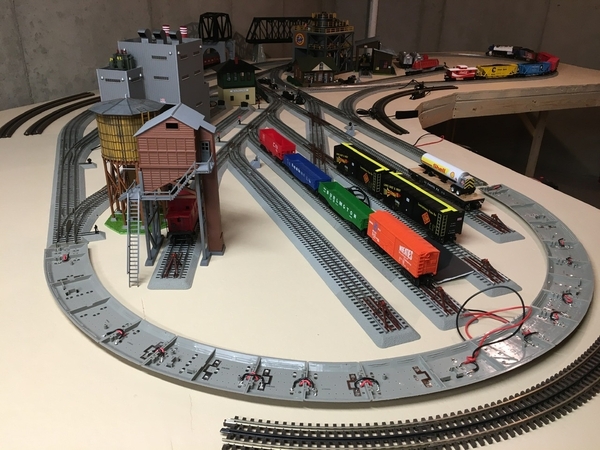Thanks for your help guys. I think the jumpers soldered between pieces is the best way for me to go. I didn't realize that the pads were designed to be soldered to underneath. I thought only the terminals for wires connections were available. I'll get myself a good solder gun with medium and high wattage settings and that should do the trick nicely I suspect. It's been a frustrating time trying to keep the trains running smoothly, especially since my layout is unfortunately in a non-climate controlled space in my attic and the big temperature swings wreak havoc on the interconnections - even with the tracks screwed down!
Hi David,
Soldering each piece of FT to the next will certainly make your track connections and connectivity virtually bullet-proof, but it is a laborious process, depending on how many linear feet of track you have and whether you are using any 30" straight pieces.
Both the center (+) rail and one outside rail (-) can be linked together along the entire perimeter, if necessary. I would use stranded 14 gauge wire. You can also create small "tunnels" in the underside of the FT for the wires to pass through, with a rotary sanding disc and a Dremel type tool.
Rather than do the entire layout, you might want to first check all along the layout with a digital voltmeter ("DVM"); then apply the above manual fix; and see if that solves the problem. If not, you can then use the solder method for just those sections where there are voltage drops. I have done that to certain problematic sections of my FT layout.
Even if all the sections are soldered together, that does not necessarily solve any voltage loss issues resulting from not enough power drops alone the layout. Even layouts with perfect connectivity may still need multiple power drops.
We touched base many months ago and live on the North Shore and have relatives in the Needham area and would be glad to stop by and try and help out, but my availability in the next couple of weeks is limited.







